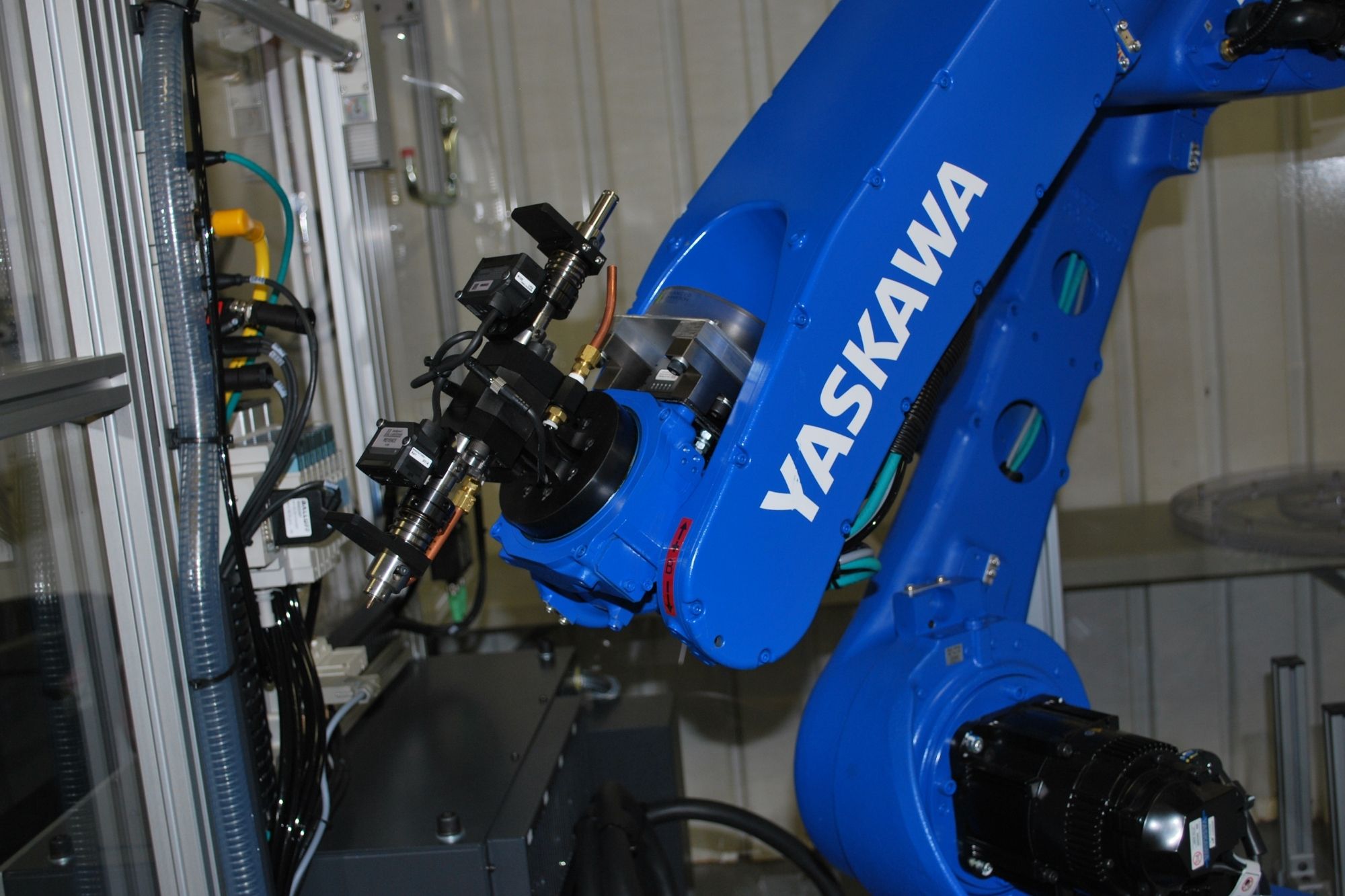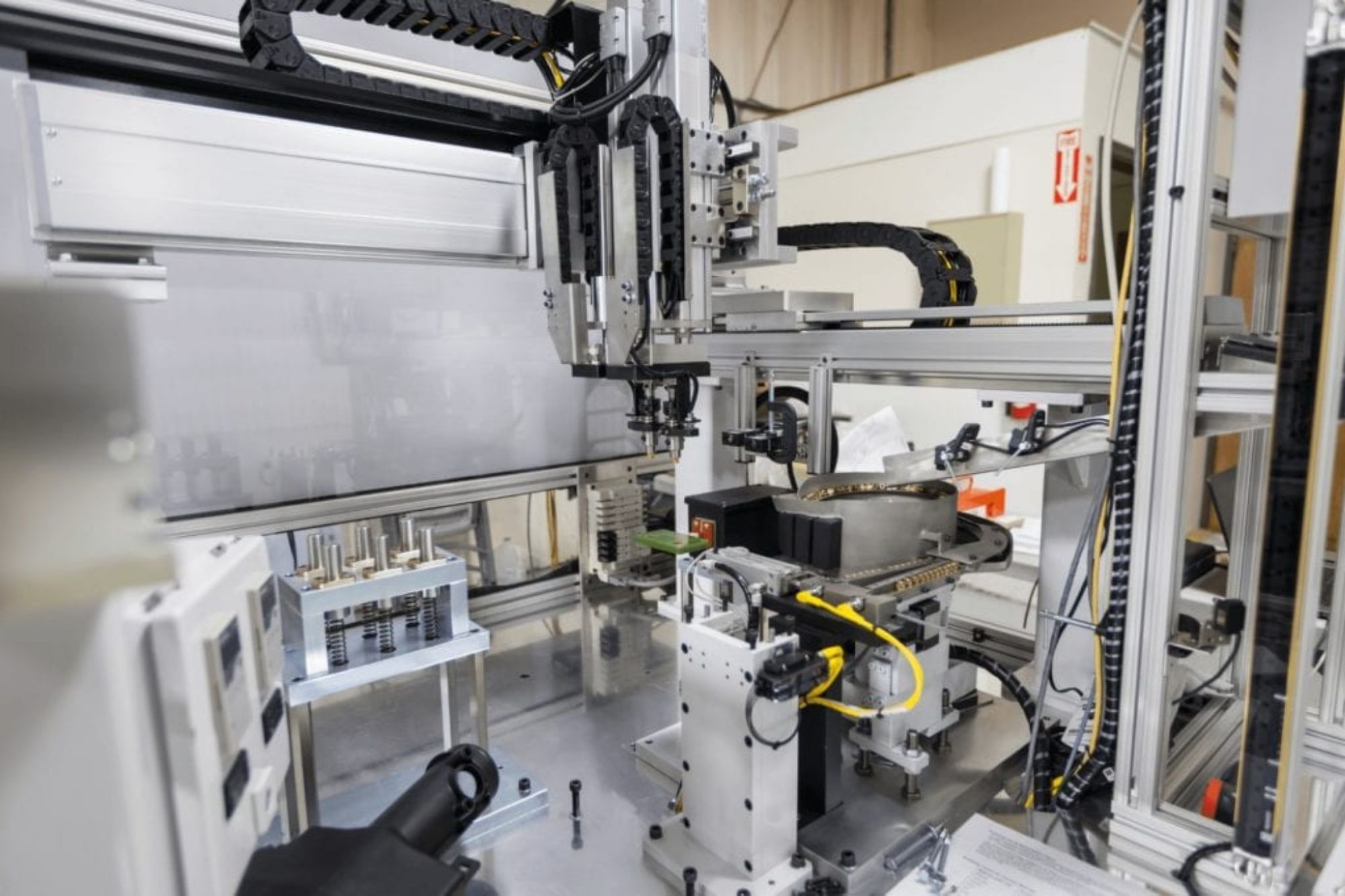Automated Robotic Systems
Improve accuracy, speed and repeatability around the clock
Increases productivity and profitability

Addresses labor shortages
Suits a range of industries and applications

Beyond Conventional Automation
Robotics can take your assemblies to the next level
Are You Falling Behind?
Without automated robotic systems, your assemblies could be suffering from long cycle times or insufficient quality. Failing to meet demand could damage your customer relationships, and shortchanging productivity can hurt your company’s bottom line.
With automated robotic systems from AMS, you can:
- Optimize cycle times.
- Meet stringent quality metrics.
- Adapt to new assembly requirements in the future.
You Want to Go Faster and Farther
You want to focus on productivity and growing your company, but labor shortages, safety issues and inability to meet volume demands could be constant threats. Are you ready to see where robotic assembly could take you?
Choose AMS for our:
- Deep application knowledge.
- 99.5% on-time delivery record and 97% customer satisfaction.
- 24/7 hotline for urgent support.
- Flexible “engineering only” option.
AMS is part of the FANUC Authorized System Integrator (ASI) Network. FANUC America prides itself in having an extremely talented and experienced group of robotic system integrators that are part of our FANUC Authorized System Integrator (ASI) Network for automation systems. AMS is proud to be a part of the industry's largest and most trusted network of industrial robot systems integrators.
Count on Automated Robotic Systems
AMS has in-depth expertise in designing, assembling and implementing robotic cells for a wide variety of industries including:
Automotive
Medical device
Plastic processors
No matter the application, AMS can determine the most efficient way of producing your desired result with experience using:
SCARA robots
6-axis robots
Gantry/Cartesian robots
Collaborative robots
(co-bots)
Fulfilling Your Need for Speed
Where would you like to bring more efficiency, precision and consistency to your assemblies? Automated robotic systems are ideal for:
- Assembly
- Welding
- Pick N' Place
- Screwdriving
- Vision-guided robots
- Dispensing
- Material cutting
- Clean room operations
- Insertion

Clients rely on AMS to move their businesses forward with custom designed and integrated automated robotic systems. These industrial robots make complex assembly movements possible, surpassing the capabilities of conventional assembly technology.
With robotic integration, you can bring new efficiency to your production line and material handling. You’ll see greater accuracy, dependable repeatability and improved speed to market. In addition, robotics can help you save on labor costs, decrease production costs, improve quality and shorten cycle times. Scalable systems adapt to seasonal fluctuations and can be reconfigured as needs change.
Find the Right Automation Partner For Your Robotics System
Download the Free Automation Partner Checklist
This free, easy to use one-page checklist will help you choose the right automation company to meet your plastics assembly needs. Be prepared with the right questions to ask to get the answers you need. Complete this short form to receive your checklist.
Surefire Automation Plan
- Book an application review.
- Share your vision and goals.
- Grow with automated robotic systems.
Robotic Systems FAQs
Get the answer to Frequently Asked Questions (FAQs) on robotic systems.
Yes and no, but in an overall positive way long-term. Inevitably, businesses do turn to automated solutions to replace human workers at both ends of the complexity spectrum (meaning for both mundane and extremely specialized tasks), when the economics of the exchange present unignorable payback. That said, a major proportion of manufacturing work calls for judgment, instinct and creativity, which are domains where robotics just can’t compete. Over time, automation and robotics will help us alleviate the burden of undesirable jobs from humans, all while creating new opportunities for those humans in adjacent roles. A good way to visualize this goal is to picture robots as “co-bots,” serving alongside and augmenting humans in manufacturing so that their human partners can enjoy overall safer, easier, more engaging work.
Manufacturing robots are broadly used to automate all types of motion, movement, articulating, positioning, manipulating or force-inducing actions. Robots can stack heavy boxes, rotate barrels, transport pallets, pick up components moving along a conveyor, connect fasteners, weld steel, paint vehicles, clean up areas and even freely drive goods around a plant. Robots can take the form of miniature tool arms that place tiny capacitors on circuit boards, as well as massive crane-sized robots used to pick up major equipment.
Robots help remove humans from unergonomic, unsafe, repetitive and downright dangerous environments, which is the primary advantage we find in using robots in manufacturing applications. Beyond safety, robots offer continuous, zero-downtime, consistent, repeatable, high-speed, high-precision production capabilities to virtually all manufacturing industries and product types. Robotics do come at a cost, of course, but when selected and sized for the appropriate application, their return on investment justifies the expense. We consider this an advantage in itself – that robotics are widely able to provide a payback given just how much they can improve operations.
Robotic systems provide fantastic benefits when deployed as standalone solutions, but shine even brighter when integrated into wider workflows. Robotic integration is the process of implementing a robot in conjunction with separate machines, human workflows, data and control systems, and plantwide operations. Tuning and optimizing control schemes across the robot and adjacent systems strives to achieve the highest possible efficiency and throughput, which is only possible when fully integrating these machines.
There is nothing better in manufacturing than a day when all employees make it home safely, which is of course the goal for every day, for every manufacturer. Manufacturing robots are primarily deployed to support this goal, and countless workers are afforded the benefit of safe work every day thanks to these robots. In this way, safety is the largest advantage of implementing robots in manufacturing, followed by higher production throughput, fewer quality issues, higher employee engagement (by alleviating mundane tasks) and lower long-term costs.
Especially in today’s market, manufacturers need all the help they can get in boosting capacity, lowering operating costs and attracting new talent. Robotic automation provides a direct route to these goals, allowing manufacturers to reallocate staff away from repetitive tasks while improving overall plant efficiency. Even more importantly, robots remove humans from physically taxing work, eliminating sources of injuries and promoting safe work environments.
Many manufacturing, fabrication, assembly, inspection and test functions can be easily achieved with automated robots. Generally speaking, robots are used to either handle objects directly or to use tooling attached to their arms to perform specific actions on those objects. Multi-axis robots can invert, position and manipulate their tooling or objects with extreme fidelity and speed, such as when picking moving objects off of a high-speed conveyor to place into packaging or to perform spot welds on irregular surfaces. Cartesian robots produce more limited movements, typically involving stacking or layering objects such as when placing cartons on pallets. Many other custom tasks can be tackled by robots, too. In essence, anywhere a directed motion needs to be computed based on real-time input, a robot can help.

